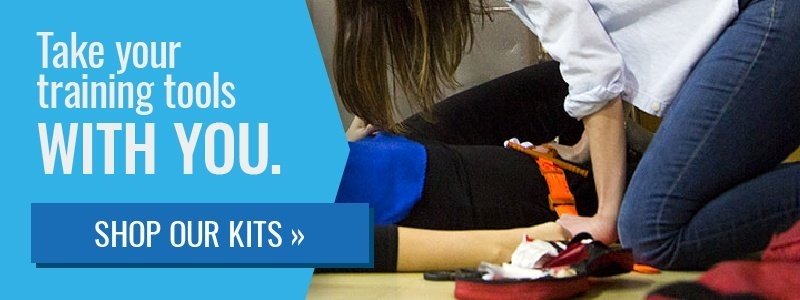 While we typically spend a great deal of time speaking about responding to workplace violence or school shootings, there are many workplace injuries that occur unrelated to acts of violence or active shooter scenarios.
While we typically spend a great deal of time speaking about responding to workplace violence or school shootings, there are many workplace injuries that occur unrelated to acts of violence or active shooter scenarios.
Manufacturing and industrial facilities are accident-prone to say the least, and with forklifts, heavy crates, and assembly line equipment, risk is ever present.
If you are thinking "It would never happen at my facility," you're wrong. Rather than passively hoping for the best, it's time to be proactive about facing potential injuries at your industrial facility.
Common manufacturing injuries and how they occur
Forklift and other transportation injuries
While forklifts have a variety of safety features, they are nevertheless a heavy piece of machinery that presents major safety risks. Make sure that employees who regularly drive forklifts do not become so comfortable in the driver's seat that they become less alert. Many accidents happen, not when new employees are learning, but when experienced employees lose focus.
Falls, slips, trips
Slipping or tripping on the manufacturing floor might be as minor as skinning your knee or as major as breaking a bone or incurring a concussion. A worker could trip walking down the stairs or fall from a second story landing to the ground floor. These types of injuries are almost always preventable, but prevention no longer matters after an injury has occurred. At that point, response is what counts.
Getting caught in dangerous equipment
Amputation injuries are arguably the most serious of injuries that might occur on the manufacturing floor. If a worker gets their arm or leg caught in a piece of equipment and loses part of an appendage, then you will likely need a tourniquet to stop the bleeding. Remember, a person can bleed out in just 2-4 minutes, so effective tourniquet application is vital.
Responding to machine-related injuries
First, call 911
Your first reaction to a serious injury should always be to call 911. If you are the first person to jump in and treat a colleague who has a life-threatening injury, instruct someone else to call 911.
Identify the injury
Sometimes an injury is obvious. If a coworker has a severed limb or is bleeding profusely from their head, then you know that your job is to stop the bleeding. Other times, however, injuries are not as easy to identify. Internal bleeding or brain trauma could be at play, but unless you are a medically trained professional, you have no way to be sure. In that case, your main job is to make sure the victim's current position and location are both safe and to stay with them until EMS arrives.
Evaluate the environment
Unless the injured victim is in a dangerous location, you should leave them where they are until EMS arrives. Moving an injury could exacerbate it. However, if there was an oil spill that may explode, or if the injured person is near a piece of equipment that might fall or cause additional injuries, then your first priority is to relocate.
Treat
If your workforce is properly trained to respond to manufacturing emergencies, then someone should be retrieving the Bleeding Control Kit at the same time that someone else is calling 911. There is no reason to not treat a person with a life-threatening injury. Many people do not realize that Good Samaritan Laws protect civilians from facing legal ramifications when they provide medical treatment in an emergency.
To ensure that your team is able to provide the best treatment possible, keep Bleed Control Kits on hand and educate your team on how to use them. Don't have Bleed Control Kits? Contact us today to purchase yours!
.png?width=499&height=133&name=Logo-menu%20(1).png)



